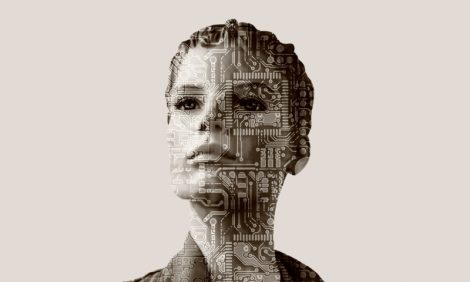
Understanding AI, and what it’s going to mean for business finances

Caroline Plumb OBE is a successful entrepreneur and UK business ambassador. She leads Fluidly, a Xero partner using machine learning to predict and optimise cashflow. Contact her on @cplumb or @Fluidly
In the past few years AI has crept into all our lives without us really noticing. It powers the automatic corrections that pop up when you make a typo on a search query, customer service chatbots, robo investment advisers, cybersecurity and fraud detection software and of course Siri and her slightly-less glamorous Android alter ego, Cortana. These all exist because of AI technology.
The big internet giants and VCs are investing massively in AI because it is a fantastically useful and transformative arena of technology. It’s spreading like crazy. However like all fast-moving new developments it comes freighted with concerns and misunderstanding about why it matters, how it works, and what it can and can’t do.
So what exactly is AI? What’s the difference between AI and Machine Learning?
The Oxford English Dictionary defines Artificial Intelligence as ‘The theory and development of computer systems able to perform tasks normally requiring human intelligence, such as visual perception, speech recognition, decision making and translation between languages.’ It’s the study of systems that perceive the world around them, form plans and make decisions to realise those plans.
Machine learning is one of the techniques used to create such systems. It’s a highly academic field based on complex mathematics and algorithmics. The end result gives ‘Computers the ability to learn without being explicitly programmed’ according to AI pioneer Arthur Samuel. He coined the term machine learning back in 1959. ML has become extremely popular across many industrial applications. This is because it can spot otherwise indiscernible patterns in large and complex datasets.
AI demonstrations often involve game playing, because although most advances in the tech don’t relate explicitly to them, games are a convenient and readily-grasped way to pit human against machine. The latest such example being Google Deep Mind’s AlphaGo computer, which beat world champion Ke Jie at Go. Ke Jie at Go is a fiendish game which can have more possible board configurations than there are atoms in the observable universe.
How is AI going to change the way I work?
All very well, you might be thinking. But I work in SMB finance, I’m not a computer scientist and I don’t want to be world champion at tiddlywinks never mind Go. How is this going to affect my job?
Well, practical applications of AI in the field of business finance already include automatic reconciliation and invoice coding. But more significant changes are on the way, not least because of the second payments directive, PSD2. PSD2 is a law that all EU members must implement by 2018 and is way more exciting than it sounds. It will break down the monopoly that banks currently hold on their users’ data, allowing third parties to access it – with the users’ permission of course.
It’s part of a global regulatory trend towards Open Banking, which also applies to data held in the cloud by accounting systems like Xero. Precisely the kind of big data sets that AI and ML work best on. Being able to use a businesses’ banking and accounts records will bring the ‘holy grail’ of FDs and management accountants everywhere; forward looking predictive data, that much closer. Instead of having to drive the car by looking out of the rear view mirror, PSD2 and Open Banking make it possible for businesses see the road ahead. Or, at least a computer-generated prediction of some of it.
That has huge implications for many of the traditional financial processes we currently take for granted like budgeting, credit control and forecasting. I believe that one of the most powerful and important applications of AI in SMB financing will be around intelligent cashflow.
Why intelligent cashflow?
Cashflow crises can be disastrous, and are always incredibly stressful (ask me how I know). So why do they still account for so many business failures? I believe it’s because the way we manage cashflow just isn’t fit for purpose any more. You wouldn’t expect your CIO to manually check for the latest computer viruses every week, so why are we still managing cashflow on the same Excel spreadsheets we’ve used for decades?
It’s crazy. So the team here at Fluidly is on a mission for a better way to do it. Our system automatically predicts the money that will flow into and out of a business. This makes accurate cashflow forecasting easier, quicker and more reliable. Smart credit control helps make sure you get paid faster. It’s a really exciting start with loads more still to come.
I’ve spent too long worrying about cashflow and have the bags under my eyes to prove it. That’s why I started Fluidly. My vision is that founders, chief execs, FDs and accountants will all be able to sleep more soundly knowing that their intelligent cashflow system has got their back, 24/7.
The post Understanding AI, and what it’s going to mean for business finances appeared first on Xero Blog.
Source: Xero Blog






